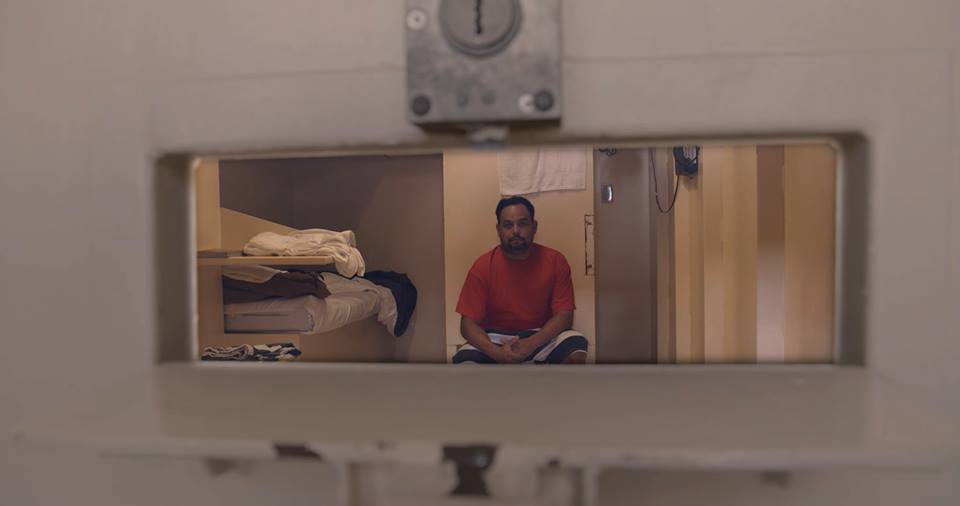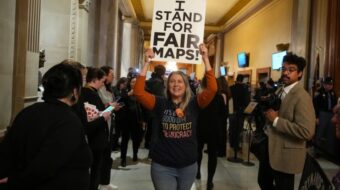
“So long as I do not firmly and irrevocably possess the right to vote I do not possess myself. I cannot make up my mind—it is made up for me. I cannot live as a democratic citizen, observing the laws I have helped to enact—I can only submit to the edict of others.” – Dr. Martin Luther King Jr. speech titled “Give Us the Ballot,” 1957.
The outcome of the 2018 midterm elections saw the Republican monopoly of government broken, with a significant reshaping of the political terrain as the nation marches towards the 2020 presidential election. Yet, despite the higher turnout that year, a specter haunted the vote, one which casts a shadow that has only grown darker since then. This dark entity is voter suppression, and the film Rigged: The Voter Suppression Playbook would like the world to know more about it, along with who’s using it to gain power for the few at the cost of the many.
Filmed primarily during the 2016 presidential election, Rigged tracks the systemic, decade-long effort to suppress votes and reverse the growing democratic tide of younger non-white voters—the same demographic change that helped elect President Barack Obama in 2008. Narrated by Jeffrey Wright (W.), the documentary lays out a variety of voter suppression tactics with a focus on how the Republican Party has used each one to win elections for its candidates. Rigged includes interviews with not only voting rights advocates, law professors, and Democratic strategists, but also goes to the other side of the aisle by having Republican strategists and politicians explain (and often excuse) the “plays” of the GOP’s voter suppression. The film is directed by Michael Kasino and is a production of the American Issues Initiative.

The documentary starts off under the framework that the intensification of voter suppression was a result of the white supremacist backlash against the election of the first Black president, Obama. It explains that this election made clear to Republicans that a growing demographic was being energized to vote and, therefore, challenge the powers that be. This resulted in a long game played by the Republican Party, backed by the billionaire conservative Koch brothers, that would aim not to increase the votes of those who back their policies, but rather suppress the votes of those they associated with voting for Democrats. For the next 78 minutes of the film, we are taken step by step through the “plays” of systemic voter suppression.
The documentary has a number of strong points that make for compelling story-telling. Laying out the tactics, and detailing the causes and effects of each one, demonstrates that the suppression of voting rights followed a detailed and thought-out plan. The tactics—ranging from the purging of voting rolls and passing of new, restrictive voter ID laws to gerrymandering and voter intimidation—are shown not as the diabolical plan of just a few “evil” individuals, but as the systemic blueprint of those in power who seek to keep growing segments of the population powerless.
Although the film begins with the 2008 presidential election, it acknowledges that voter suppression has a long history in the United States, dating back to the time of Radical Reconstruction, the Jim Crow era, and the passing of the Voting Rights Act of 1965. Rigged makes a point that suppression often targeted marginalized groups, such as Black people, and that the new playbook has aimed to do so again, on a massive level.
Rigged goes after voter suppression propaganda in an efficient way. Putting together a variety of clips of GOP members speaking about the (false and overblown) “danger” of so-called voter fraud, it shows viewers the script being followed by the Republican Party that seeks to present facts as lies, and truths as fake news. This is important given that narrative plays a large part in how voters make their decisions, greatly influencing public opinion.
Another strong point, albeit a bleak one, is the film’s illustration of how voter suppression helped bring about the election of Donald Trump. Since the 2016 campaign, there have been many revelations concerning how Trump was placed into office. The mainstream media and talk shows focused on a number of rumors and actual reports about WikiLeaks and Russian interference in our elections. Yet, what didn’t get nearly as much attention was the Republicans’ systematic efforts to suppress the vote—an established fact, and arguably a far greater threat to democracy. The documentary is not steeped in conspiracy theories and half-truths, but focuses on actual traceable tactics that had a clear influence on Trump’s placement into the White House.
Attention is particularly given to how the gutting of the Voting Rights Act (VRA) in 2013 played a key role in accelerating Republicans’ voter suppression. It wasn’t the first play in their “book,” but it was one they were building up to implement. By using the Supreme Court to remove a major provision in the VRA that required lawmakers in states with a history of discriminating against minority voters to get federal permission before changing voting rules, vulnerable communities were left open to suppression. Since this change to the VRA, many states have implemented stricter voter registration rules, often targeting voters of color.
With this game of political chess that Republicans have been playing for nearly a decade, one might begin to feel there’s no hope against the GOP machine. The film counters this by highlighting individuals who are on the ground doing the work to combat voter suppression. Voting rights activists and reverends Dr. William J. Barber II and Dr. Cassandra Gould both make appearances in the film. Viewers are given a chance to see the work these leaders are doing and the grassroots organizing they’re part of. It gives a sense of hope when we witness their victories and their explanations for why they fight. The audience is able to see that there is resistance to this suppression.

The showcasing of this resistance, by default, also highlights a glaring absence in the film—the Democratic Party. While the GOP is presented as a united front to suppress the vote, there doesn’t seem to be a unified counter from the Democratic Party in the movie.
At a screening and panel discussion at the Netroots Nation conference this month in Philadelphia, I asked executive producer Mac Heller about this missing element. Heller noted that the left is “fractured” in comparison to the right’s near-monolithic unity and said progress is needed. Bill Cobb, former deputy director of the ACLU Campaign for Smart Justice, asserted on the panel that the people would need to be the ones to “show up” to save democracy, because no one else would be doing it for them. Panelist Janet Diaz, who won an election to became the first Latina member of city council in Lancaster, Penn., in 2017, explained that there’s a need to get candidates elected who have the interests of the people in mind, and who will fight to combat voter suppression.
The controversy surrounding the 2016 elections, coupled with the historic victories won in 2018, revealed both the severe limitations and power of U.S. democratic institutions and how easily many of them are being undermined—first and foremost the right to vote. Heller noted that the film is designed to “make you angry and want to do something.” With the facts presented in the movie, along with the losses and victories when it comes to fighting for a transparent democratic process, there is no doubt that the documentary will ignite concern and possibly rage in anyone who views it. At a little over an hour, Rigged doesn’t overstay its welcome, but leaves a lasting impact as necessary viewing.
Rigged: The Voter Suppression Playbook is now available on Amazon Prime, iTunes, and Google Play.










